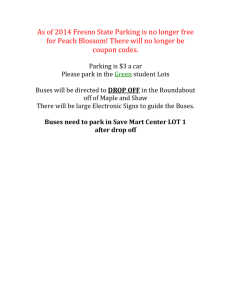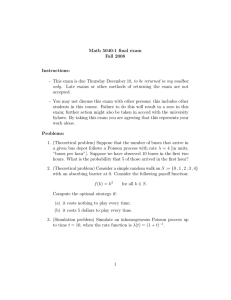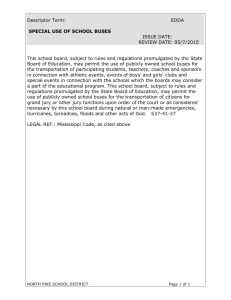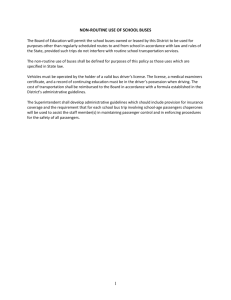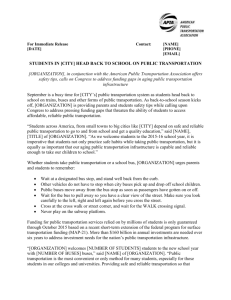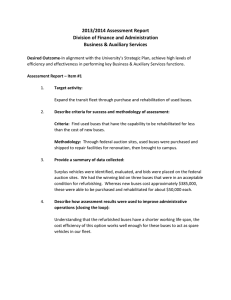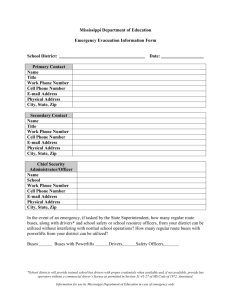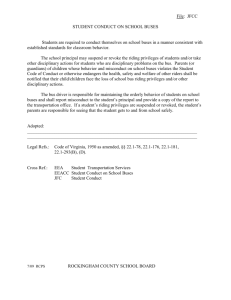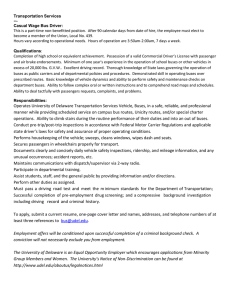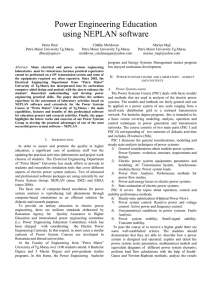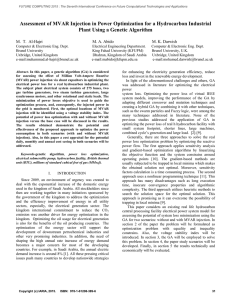Document 13505604
advertisement
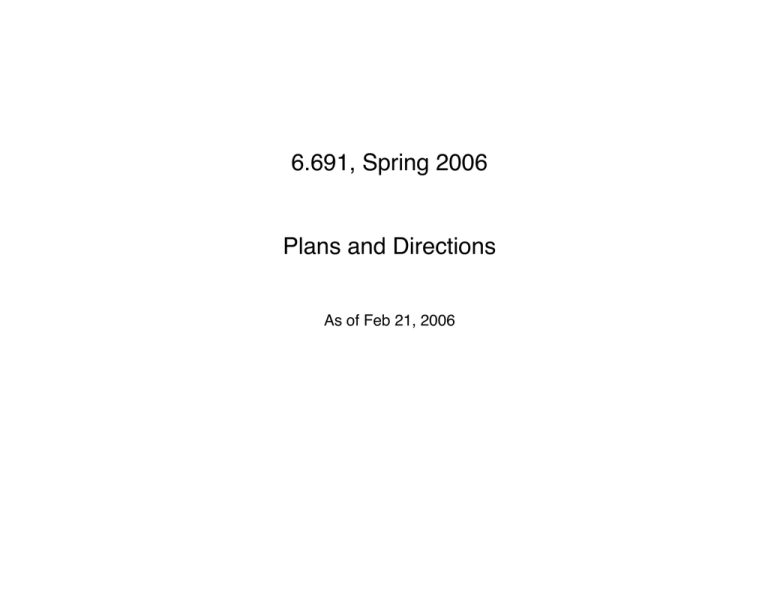
6.691, Spring 2006 Plans and Directions As of Feb 21, 2006 Here is a small power system To see what is up we need to understand the parts: Generating Plants Are Connected to buses (numbered) Lines Connect the buses (impedances noted in ohms) Loads are noted at each loaded bus Generating Plant: Source Buses are Connection Points Each line has an impedance: here in Ohms Many buses are loaded, here MW+j*MVAR Transformers connect 69 kV to 161 kV buses To understand how the system works: 1. Load Flow -- how does power flow through the lines System Representation: Lines, Transformers, and Per-unit Systems (Chs 4, 5, 9) Load Flow Analysis (Ch 10) 2. What do generators do? Generator representation (Ch6, 7) Dynamics: fault behavior, dynamic swings Simplified models (voltage behind reactance 3. What do exciters and voltage regulators do? They have dynamics of their own. (Ch 8) 4. System Control: generation control How frequency is stabilized (Ch 11) Transient stability: limits to operations (Ch 14) This involves all those models from above 5. Abnormal operations Unbalanced Operation Symmetrical Components (Ch 12) Faults: detection and system protection (Ch 13) 6. Power Systems Economics Cost of Service: Economic Dispatch (Ch 11) Deregulated System Economics Structure of some ‘markets’ Project Topics: (Suggestions-- I am open to negotiation) Regulatory Lag: how often should rate cases be? Carbon Tax and Nukes: can it be made to work? DC vs. AC in vehicular systems: tradeoffs and performance Market Power and Congestion What are ancillary services worth? Is there a case for deregulating transmission? ‘Net Metering’ and Standby power -- how do we pay for it? Robust Utilities vs. Standby Generators: which is best? Analysis of the blackout of … (you pick a blackout) How to (and should we) subsidize green electrons?
